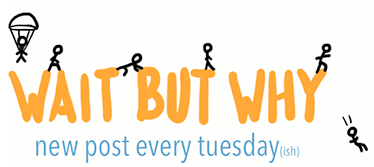0207 490 2311
Phone for sales and support

Jamie Harper
Spend days duking it out with synonyms, sometimes for global brands.
Is your content really ignored? The truth about scan-reading online.

You know all that painstakingly crafted content on your website? Yeah, your visitors aren’t reading it. At least that’s what a number of experts would have you believe. Wrongly, in our opinion.
There are thousands of articles online (from Jakob Nielsen to Hubspot) insisting that only 16% of your visitors are reading your content word-for-word. That’s less than one-in-five. The rest of your readers, allegedly, are scan-reading - quaffing back just 20% of words on a page as they search for the information they need.
Disheartening, right?
Maybe not. If your copy is good, your visitors will read it. So before you replace well-written content with videos of pole-dancing kittens, let’s look at what’s actually going on here.
Why do users scan-read? (The digital pogo-stick problem.)
Let’s be clear: people do scan-read online. You do it. We do it. So what’s the deal?
In short, people scan-read when they are not getting the information they need quickly enough. The internet is about information exchange and - when it comes to the crunch - online readers are looking for answers. Yet the www is dripping with poor content. Content that systematically fails to address you, dear reader. Content that misses the point. Content that is self-congratulatory instead of reader-focused.
You know that saying “water water everywhere and not a drop to drink”? Kind of applies to the web. Oodles of online content, nothing worth reading. Result? Readers are fickle. Which is a shame. Because, unlike five years ago, these days it’s easy to find fantastic branded content out amongst the dreck.
Think about your last blog post.
Your first sentence was read. Bet your soya latte on it. The second sentence may have been read too. But unless your opening gambit reassured your reader that the words in front of them were going to solve a problem, fulfil a need or satiate some sense of curiosity, they likely started scanning in search of something they found relevant. Worse, if your content felt too self-promotional, too boring or too poorly-written, your reader will have grabbed their digital pogo-stick and bounced. See ya.
So how do you write to be read?
Where do we start? Good copywriting is an art form. But behold our quick pointers that will help you begin to get scan-readers hanging on your every word...
Be hypodermic about getting to the point
Remember, your reader will start scanning when they cannot find the information they are looking for. Think about your reader’s wants, needs and desires. Address them from the off. Be specific. Get to the point. That starts from the first sentence, once you’ve got a decent headline of course...
Don’t. Be. Boring.
To build a captive audience, you need to be captivating.
If your writing is a chore to read then you have failed. Grab your reader’s attention. Not by using fancy words or florid imagery, but by having a personality. Be imaginative. Express yourself. Bring your reader along for the ride.
And hey - once you begin to do that consistently, your readers begin to trust you. They start devouring your content and sharing it with their network instead of scanning sceptically. These days content is an ever-present background hum in the symphony of life. Make yours sing.
Subheads want to be friends with you. There’s no harm in that.
Neilsen’s studies about how users read online have given rise to some ludicrous suggestions about how to present content (our favourite of which is to never position your content in the centre of a page). But one of the strategies that holds water is the use of subheads. They break up large chunks of content, help to introduce new ideas and give your reader a pause for breath. Good eggs, all round.
Hire a decent copywriter
Too busy to fix your own content? We can help with that.
Let’s wrap this up
- Users scan-read when they cannot find the information they are looking for or are unsure a piece of writing is relevant to them
- Engage your reader by creating highly-targeted content that addresses their needs, questions and desires
- Get to the point
- Be imaginative and have a personality - if your content was boring to write, it will be boring to read
- Use subheads to break up large chunks of copy and give your reader a break
Bonus paragraph for digital marketers
The majority of articles on how web-users consume content reference the studies of internet usability guru Jakob Nielsen. Yet a disproportionate number of these articles refer to studies that Nielsen published in the late nineties. And while some of the tenets of those studies hold true, being beholden to fifteen-year-old findings is surely not good practice in a media as fast-paced as the web. Content has exploded since the late nineties. Great, good, bad and ugly. Dogmatically sticking to the sweeping notion that only 16% of the content will be read on any given web-page seems a little over-simplified, wouldn’t you say?
More posts in: Copywriting

Why creating good written content is like scoring a symphony
Beautiful melodies build up one note at a time. What’s mind-blowing is that this unit, the individual note, means next to nothing on its own.

Why your writing isn’t finished when you think it is
In a digital world built on immediacy, a little patience will transform your writing.

How long should your blog posts be?
The definitive answer to this much-debated question might not be what you were expecting. Props to you if you already knew.

People don’t understand your writing. Here’s how to fix it.
Playing a simple game of catch can teach you a lot about getting your message heard.

Win over new blog subscribers with a few simple words
There’s something ridiculously easy you can do to build an instant connection with new subscribers.

And never start a sentence with a conjunction...
There never has been - and never will be - anything wrong with starting a sentence with and or but. Here’s the skinny.

The importance of writing with purpose (and how to do it)
Irresistible copy requires you to zero in on a few fundamentals.

1 sentence that will help you stick to your blogging schedule
Keeping your blog updated with prime cuts of content is hard. This little trick may help to rein in your stress levels.

What school didn’t teach you about writing for the web
If you’re dubious that your academic years were the biggest influence on your writing, here’s something to ponder.

Still think content is king? Think again.
When it comes to growing your presence online, the popular message is that quality content rules the roost. Fair enough, right?

New app claims to automatically improve your writing
With the European Commission and Harvard University among its users, Writefull has some pretty heavyweight ambassadors. Just don’t expect it to turn you into Hemingway.

How often should your business be blogging?
It must be one of the most frequently asked questions in the blogosphere: How often should you post?

Ban this word from your business. Right now.
750,000 words capable of being wrought into sentiments that would bring a tear to the eye of Dickens

5 last minute tips for your email marketing this Christmas
Lights festoon the streets. Shoppers wear stroppy faces. Somehow, Christmas is here already. That means it’s time for three things: mince pie scoffing, mulled wine quaffing and making the most of your Christmas email marketing.

Want persuasive copy? Stop thinking about yourself.
Question: People come to your website to read about your business, right?
Wrong.
They come to find the answer to a problem.

Why you should and shouldn’t write your own content
Sometimes the closer you are to something, the less you are able to see it.

Want to rank well in Google? Stop freaking out about keywords.
So you want to appease Google in a post-Hummingbird world? Keywords matter way less than most people realise.

Is your content really ignored? The truth about scan-reading online.
You know all that painstakingly crafted content on your website? Yeah, your visitors aren’t reading it. At least that’s what a number of experts would have you believe. Wrongly, in our opinion.
